You are using an out of date browser. It may not display this or other websites correctly.
You should upgrade or use an alternative browser.
You should upgrade or use an alternative browser.
Throw N Mow thread...
- Thread starter OkieKubota
- Start date
catscratch
Well-Known Member
My modified Throw-n-Mow beans are doing well. I broadcasted in a standing mix of awnless wheat and winter rye, then drove over it with a skid steer (bucket down to push over the standing thatch instead of mowing). This plot also has clover in it and the two plants seem to coexist nicely.
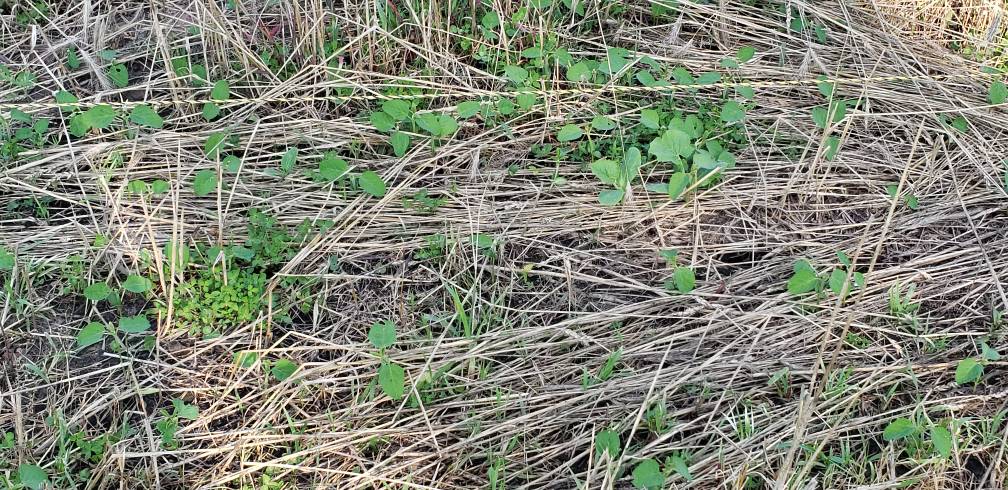
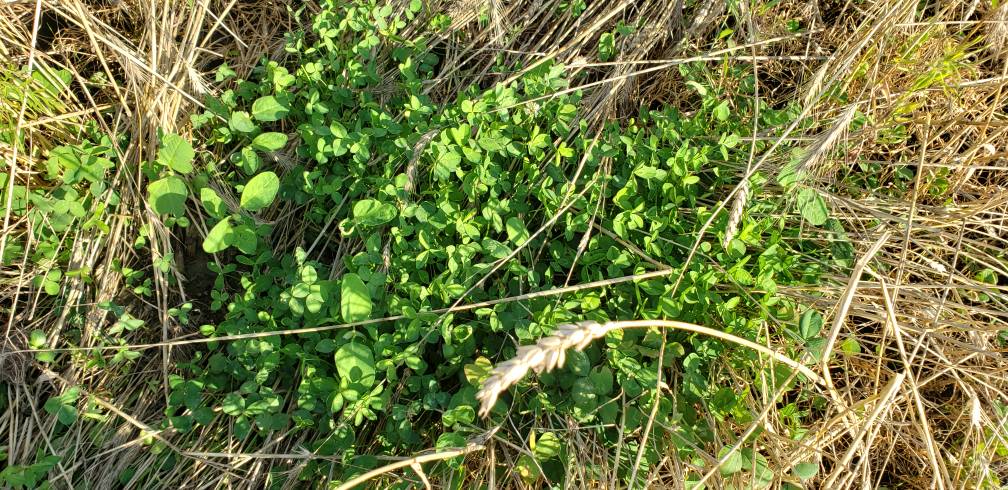
It was mentioned earlier that big seed needs to be underground. Big seeds can send out quite a root looking for soil...
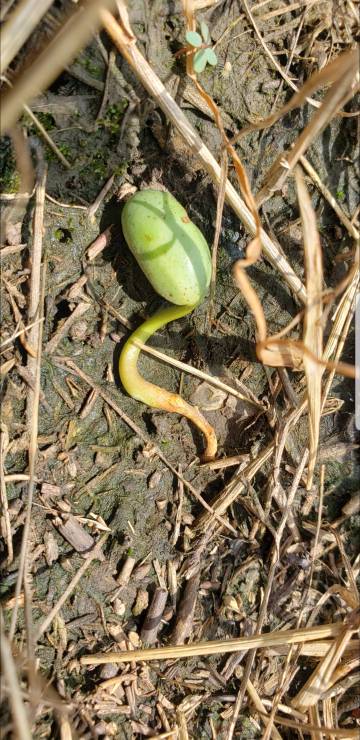
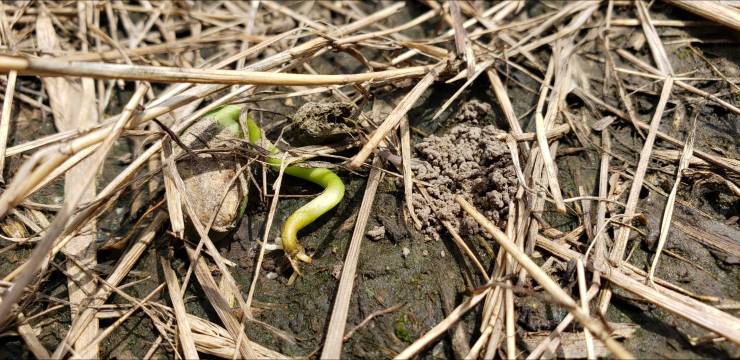
Sent from my SM-N960U using Tapatalk


It was mentioned earlier that big seed needs to be underground. Big seeds can send out quite a root looking for soil...


Sent from my SM-N960U using Tapatalk
George
Well-Known Member
How to return pigweed to the soil before it makes seed?
I’m of the opinion, perhaps mistakenly, that the site of my Pigweed infestation is the richest dirt on the place. It’s certainly the blackest. Old spot where they fed hay.
It wasn't throw and mow, in Iowa, I cut, sprayed, and disked it in. I did have an infestation of waterhemp in Iowa so I do understand what you are dealing with.
In Kentucky it is mow and throw with a spray in between, I haven't a tractor or disk. I let the rain plant the seed.


G
You’re hitting on something I’ve been trying to understand. I see many folks recommend that the first planting of a throw and mow regime be preceded by burning off the dead vegetation in order to allow better seed-soil contact. This makes sense on the surface, but does not jive with the idea of providing thatch to decompose. This is answered by people saying that there is good thatch and bad thatch. That which decomposes too slowly may have been better off as fuel for a fire. I’m left to believe that thatch from fall plots is never “bad thatch” because I never hear of anyone using fire to get rid of it before the next crop.We shouldn't clump all the native "prairie" or field species together and label them all as "weeds". A weed is any plant growing where we don't want it to be....not any plant that isn't store bought. If you're on a year round program where you plant summer and winter then you could call the things that come from the seed bank "weeds" if you didn't want them competing with your planted crops. Hopefully you're planting a well rounded rotation. However, if your just planting fall cereal grain plots and such then you shouldn't look at the native summer species with the same eye as the year round cropper. They are not just all "weeds". I don't do much of squat in the summer anymore. Right now I have between 25-30 different native summer species growing in my field and probably 15-20 of those are being hammered by the deer. It a nice balanced mix of grasses and broadleafs with a smattering of legumes. Its producing loads of organic matter in a nice balanced mix that won't bog down the system. Its providing the deer with tons of quality forage and its also protecting and recycling my nutrient bank that I've built up over the last 8-9 years. We've all come a long ways in changing our mindset since this whole movement began....and most anyone participating in this thread likely see planting food plots in a whole different light than they did in the past.....but generally speaking we've still not come around to seeing the whole picture with "weed" and native plant specie management. Many still look at it the same way they always have even though they see much of the other aspects of foodplotting with a completely different perspective.
What gives? Help me reconcile. From all my years of reading your rec’s, it seems the more vegetation the better.
MarkDarvin
Well-Known Member
You may have mistaken burn "off" (fire) for burn "down" (herbicide). Native grass plantings need to be burned periodically, or they will just peter out and stack up duff. Burning there could be fire, grazing, or plowing.
For this method as far as food plots go, many guys start with a clean slate by killing off a site with roundup and then simply throw seed into the standing dead thatch and mow it down on top of your seed. From there, we all kinda fan out on our own as to how to manage steps 3 and beyond, and that is the fun part. What was total quackery and only for the broke (like me) as little as 5 years ago has now evolved into an army of innovators connected by places like this trying new things. Piece by piece we're doing more with less money, less equipment, less chemical, less work, and far less problems from un-killable weeds.
For this method as far as food plots go, many guys start with a clean slate by killing off a site with roundup and then simply throw seed into the standing dead thatch and mow it down on top of your seed. From there, we all kinda fan out on our own as to how to manage steps 3 and beyond, and that is the fun part. What was total quackery and only for the broke (like me) as little as 5 years ago has now evolved into an army of innovators connected by places like this trying new things. Piece by piece we're doing more with less money, less equipment, less chemical, less work, and far less problems from un-killable weeds.
Thanks. No, no. I know well the difference. Fire is what I’ve seen recommended as a starter, to ensure seed-soil contact. Grant Woods in his interview on Wired to Hunt podcast recently, as one example. QDMA’s (gag) YouTube vid about TnM as another.
I guess my primary question then is ... how important is ensuring seed-soil contact. Because if more thatch, duff is better, it does hurt potential for seed-soil interaction. Should one be concerned with that?
I guess my primary question then is ... how important is ensuring seed-soil contact. Because if more thatch, duff is better, it does hurt potential for seed-soil interaction. Should one be concerned with that?
MarkDarvin
Well-Known Member
If you've got that much duff, gear your planting towards small seeds that can get down further, or things that find a way no matter what. Things like rape, PTT, annual clover, perennial clover, and winter rye. Something like rye can reach for soil if left off the soil.Thanks. No, no. I know well the difference. Fire is what I’ve seen recommended as a starter, to ensure seed-soil contact. Grant Woods in his interview on Wired to Hunt podcast recently, as one example. QDMA’s (gag) YouTube vid about TnM as another.
I guess my primary question then is ... how important is ensuring seed-soil contact. Because if more thatch, duff is better, it does hurt potential for seed-soil interaction. Should one be concerned with that?
A quality mower and a packer will help get that stuff to press down and become an extension of the soil by being warm and humid. It doesn't have to touch dirt, it's just got to be kept moist long enough to reach dirt before it dies. Crank up your seed rate a little bit, and if you don't see it growing within two weeks, go rough it up with a drag and seed it again.
catscratch
Well-Known Member
If you have a lot standing thatch and are worried about it add some more seed. With that said it's been my experience that seed will find it's way to the ground rather easily. More thatch is better than not enough thatch.Thanks. No, no. I know well the difference. Fire is what I’ve seen recommended as a starter, to ensure seed-soil contact. Grant Woods in his interview on Wired to Hunt podcast recently, as one example. QDMA’s (gag) YouTube vid about TnM as another.
I guess my primary question then is ... how important is ensuring seed-soil contact. Because if more thatch, duff is better, it does hurt potential for seed-soil interaction. Should one be concerned with that?
Sent from my SM-N960U using Tapatalk
Thanks. While I’ve been trying this for a few years, with inconsistent results, I think one thing I’ve not done a good job of is using enough seed. Our Octobers are so dry, opportunities for good times to sow seem very limited. Otherwise, a layering approach like Sturgis talks about seems really promising.
KSQ2
Well-Known Member
Have any of you ever done throw and mow with an old brassica plot? It’s been a few years but I’m going to put a brassica plot in a month or so, for some more late season forage. In past years I ended up with brassicas flowering in spring and I’ve always worked the ground to stop them from going to seed. Could I mow them after they flower to stop them from going to seed again? Or would I need to spray them with gly before they flower and then later throw and mow?
catscratch
Well-Known Member
Have any of you ever done throw and mow with an old brassica plot? It’s been a few years but I’m going to put a brassica plot in a month or so, for some more late season forage. In past years I ended up with brassicas flowering in spring and I’ve always worked the ground to stop them from going to seed. Could I mow them after they flower to stop them from going to seed again? Or would I need to spray them with gly before they flower and then later throw and mow?
It depends on what you want to plant next and the timing. I've let brassica plots flower and go to seed before. It wasn't a problem because I just nuked it with gly before spreading my next crop. I guess what I'm saying is that I don't find brassicas invasive and even if they do put down a bunch of seed it doesn't show up as a problem later. I don't know what would happen if you mowed them while bolted, some plants just send up more stems with more flowers and others die after mowing... not sure where brassica's fall. The only thing I would be concerned about is mowing down my thatch and not giving the plot enough time to grow more before my next planting. Hope this helps.
KSQ2
Well-Known Member
It depends on what you want to plant next and the timing. I've let brassica plots flower and go to seed before. It wasn't a problem because I just nuked it with gly before spreading my next crop. I guess what I'm saying is that I don't find brassicas invasive and even if they do put down a bunch of seed it doesn't show up as a problem later. I don't know what would happen if you mowed them while bolted, some plants just send up more stems with more flowers and others die after mowing... not sure where brassica's fall. The only thing I would be concerned about is mowing down my thatch and not giving the plot enough time to grow more before my next planting. Hope this helps.
Thanks for the reply Cat. One question, I wasn't sure what you meant by not giving the plot enough time to grow. If I did this next spring, I would probably put down beans and clover with some oats and if I got a good stand, I would leave it alone for a year. If I don't get a good stand, or the deer simply hammer everything too hard, I would follow beans/clover/oats with a fall plot of wr/clover.
catscratch
Well-Known Member
"Not enough time to grow"... I was referring to the possibility that you could mow your plot, then spray it a couple of weeks later before it had grown back much. In my experience thatch is priority #1 in this system. It doesn't matter if it gets laid down, mowed down, rollered down, or is left standing... thatch above the seed is important.Thanks for the reply Cat. One question, I wasn't sure what you meant by not giving the plot enough time to grow. If I did this next spring, I would probably put down beans and clover with some oats and if I got a good stand, I would leave it alone for a year. If I don't get a good stand, or the deer simply hammer everything too hard, I would follow beans/clover/oats with a fall plot of wr/clover.
KSQ2
Well-Known Member
Ok, I can see how my original question could be taken that way. I was only planning on mowing once right after I broadcast seed. I was just asking if I should spray a couple weeks before I mow."Not enough time to grow"... I was referring to the possibility that you could mow your plot, then spray it a couple of weeks later before it had grown back much. In my experience thatch is priority #1 in this system. It doesn't matter if it gets laid down, mowed down, rollered down, or is left standing... thatch above the seed is important.
catscratch
Well-Known Member
Yes, spray a couple of weeks before broadcasting and mowing. Sometimes you need to spray again at planting time (if you missed some spots or maybe have a fresh crop of grasses come up).Ok, I can see how my original question could be taken that way. I was only planning on mowing once right after I broadcast seed. I was just asking if I should spray a couple weeks before I mow.
Good luck to you, I hope this method works well at your place.
"Not enough time to grow"... I was referring to the possibility that you could mow your plot, then spray it a couple of weeks later before it had grown back much. In my experience thatch is priority #1 in this system. It doesn't matter if it gets laid down, mowed down, rollered down, or is left standing... thatch above the seed is important.
Im still trying to "perfect" the art of TnM. My issue was that I left my oats/rye up until after I seeded then went in to knock them down absolutely nothing grew, not one thing. Im assuming the thatch in that case was too thick. I did do some brassicas that came in well in a different plot that didnt have the standing dead rye.
catscratch
Well-Known Member
Im still trying to "perfect" the art of TnM. My issue was that I left my oats/rye up until after I seeded then went in to knock them down absolutely nothing grew, not one thing. Im assuming the thatch in that case was too thick. I did do some brassicas that came in well in a different plot that didnt have the standing dead rye.
That's weird. I plant in headed out wheat and rye all the time. I don't work with oats much so have little experience with that one. In all the years I've done this system I've never had too much thatch... too little sometimes but never a failure due to too much. Here in a little bit I'll post a couple of before and current pics of this spring's TnM plot.
catscratch
Well-Known Member
Here's a before, a during (drove over it instead of mowing), and current. Lots of thatch from mature wheat and rye.
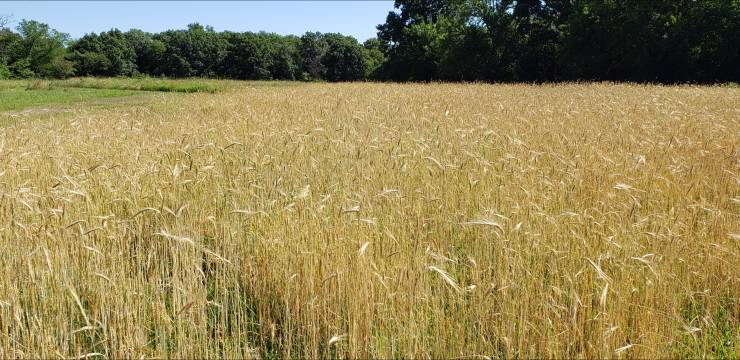
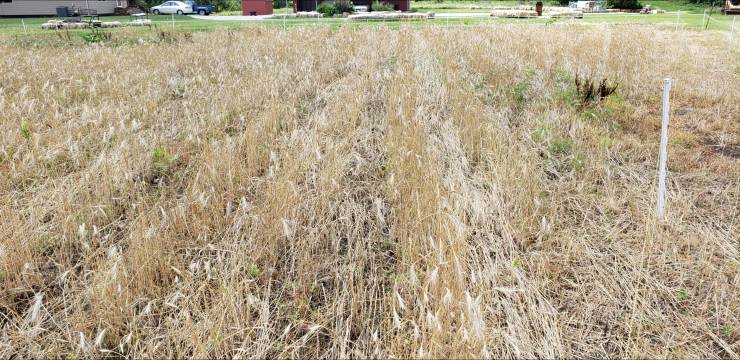
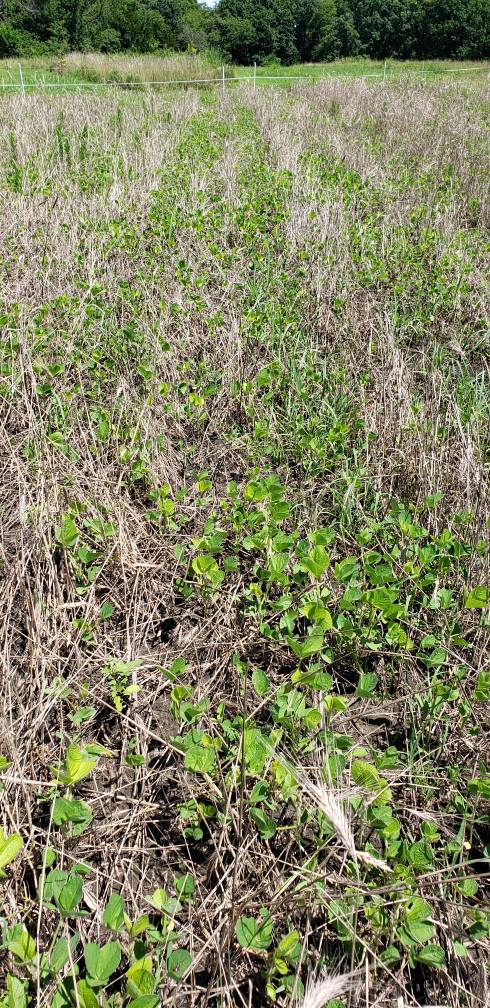
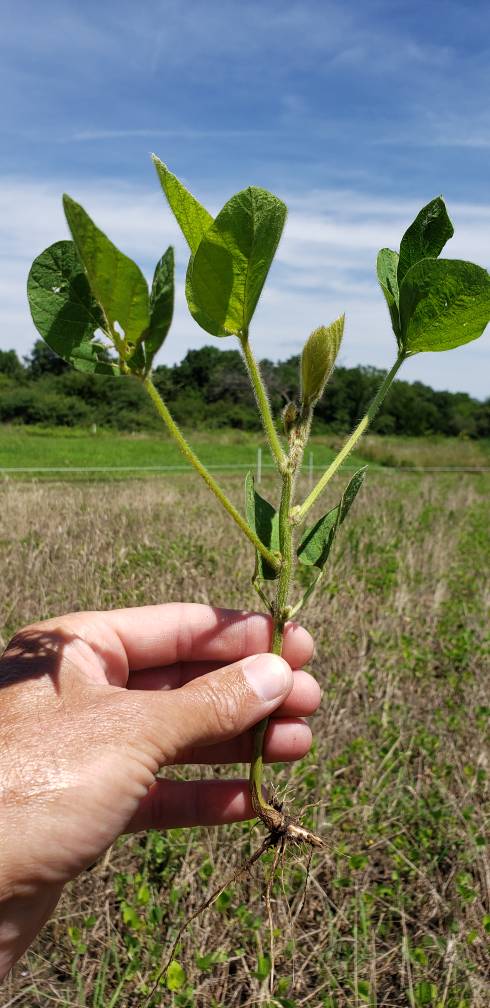
Sent from my SM-N960U using Tapatalk




Sent from my SM-N960U using Tapatalk
Similar threads
- Replies
- 13
- Views
- 1K

